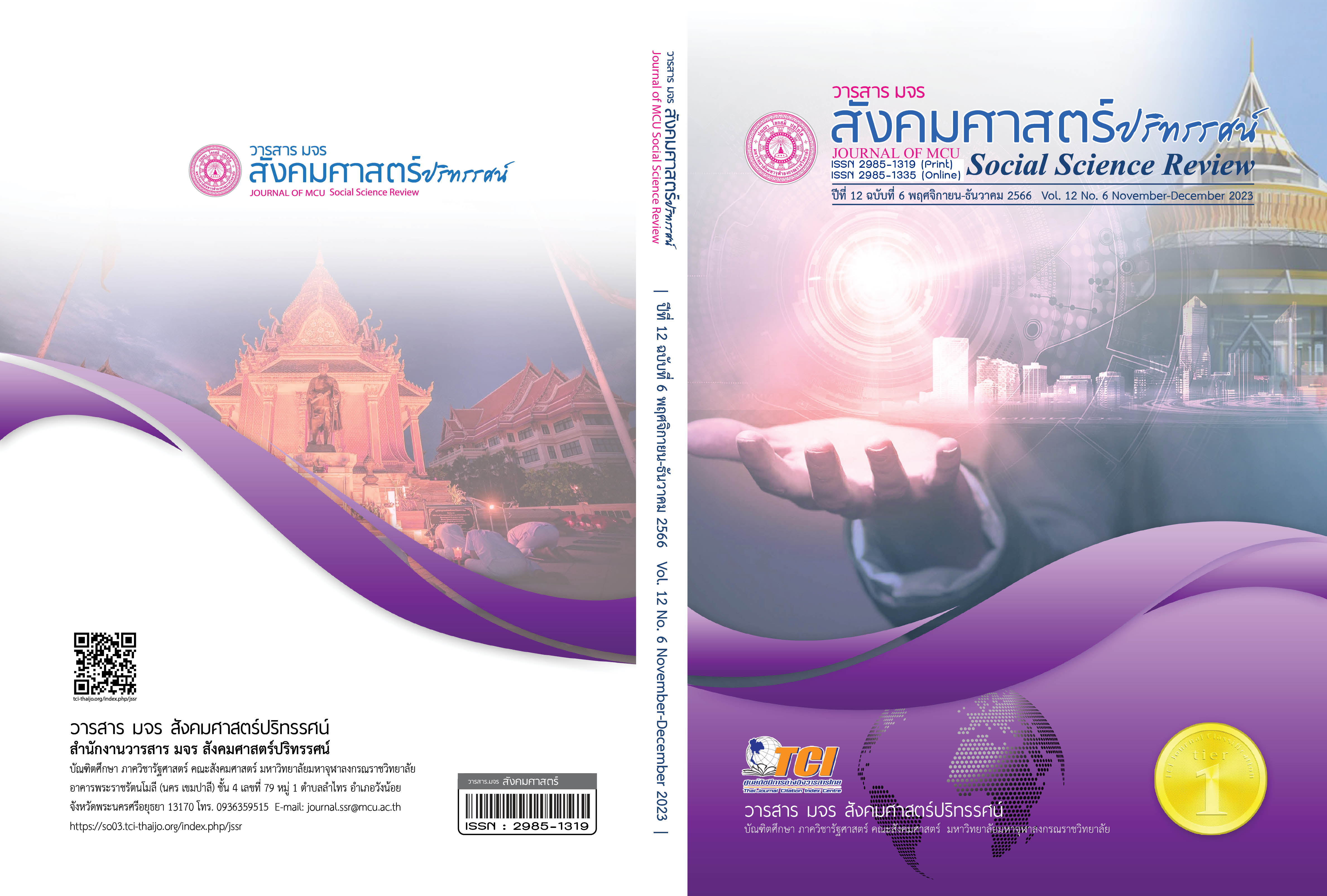การพัฒนามาสคอตเพื่อสื่อสารแบรนด์จังหวัด กรณีศึกษา มาสคอตน้องเหน่อจังหวัดสุพรรณบุรี
คำสำคัญ:
มาสคอต, การสื่อสารแบรนด์เมือง, มาสคอตน้องเหน่อบทคัดย่อ
บทความวิจัยนี้มีวัตถุประสงค์เพื่อ 1. ศึกษาปัญหาของการพัฒนามาสคอตน้องเหน่อเพื่อสื่อสารแบรนด์จังหวัดสุพรรณบุรี และ 2. เพื่อเสนอแนะแนวทางในการปรับปรุงพัฒนา มาสคอตน้องเหน่อ โดยใช้วิธีวิจัยเชิงคุณภาพ เลือกกลุ่มตัวอย่างแบบเจาะจง ทำการเก็บข้อมูลโดยการสัมภาษณ์เชิงลึกด้วยเทคนิคการสัมภาษณ์แบบกึ่งโครงสร้าง จากผู้มีส่วนเกี่ยวข้องจากจังหวัดสุพรรณบุรี จำนวน 5 คน และภาคเอกชน จำนวน 3 คน และการวิเคราะห์ข้อมูลใช้เทคนิคการวิเคราะห์เชิงเนื้อหา (Content Analysis)
ผลการวิจัยพบปัญหาและอุปสรรค ได้แก่ ความไม่ชัดเจนของอัตลักษณ์จังหวัดที่ปรากฎในมาสคอตน้องเหน่อ รวมทั้งขนาดและรูปร่างของมาสคอตและด้านมานุษยรูปนิยม ได้แก่ ข้อจำกัดของท่าทางและการเคลื่อนไหว ปัญหาบุคลิกลักษณะของมาสคอต บทบาทในฐานะเจ้าหน้าที่ประชาสัมพันธ์ของจังหวัด งานวิจัยได้เสนอแนะแนวทางการปรับปรุง ได้แก่ การปรับโครงสร้างของมาสคอต การเพิ่มความชัดเจนของมาสคอตในการสะท้อนอัตลักษณ์ของจังหวัดสุพรรณบุรี การสร้างบทบาทของมาสคอตในฐานะเจ้าหน้าที่ประชาสัมพันธ์ การกำหนดเกณฑ์ในการขออนุญาตใช้มาสคอตน้องเหน่อ
เอกสารอ้างอิง
สุชาดา วัฒนารักษ์. (2563). การสื่อสารอัตลักษณ์จังหวัดด้วยมาสคอตเพื่อส่งเสริมการท่องเที่ยวไทย (ดุษฎีนิพนธ์นิเทศศาสตรดุษฎีบัณฑิต สาขาวิชานิเทศศาสตร์การตลาด). กรุงเทพฯ: มหาวิทยาลัยหอการค้าไทย.
Callcott, M. F., & Phillips, B. J. (1996). Observations: Elves make good cookies: Creating likable spokes-character advertising. Journal of AdvertisingResearch, 36(5), 73-73.
Deligoz, K., & Sevtap, Ü. N. A. L. (2021). The Effect of Anthropomorphic Mascot on the Purchasing Intention of Consumers: An Experimental Study. Sosyoekonomi, 29(50), 229-254.
Ding, A., et al., (2022). Anthropomorphism in hospitality and tourism: A systematic review and agenda for future research. Journal of Hospitality and Tourism Management, 52, 404-415.
Greyser, S. A., & Urde, M. (2019). What does your corporate brand stand for. Harvard Business Review, 1(2), 82-89.
Jiyavorananda, S., et al. (2016). Elucidation of factors predicting the impression of “Yuru-sa” in Japanese Yuru-kyara mascot characters. International Journal of Affective Engineering, 15(3), 231-238.
Kavaratzis, M. (2009). Cities and their brands: Lessons from corporate branding. Place branding and public diplomacy, 5(1), 26-37.
Pairoa, I., & Arunrangsiwed, P. (2016). The effect of brand mascots on consumers' purchasing behaviors. International Journal of Economics and Management Engineering, 10(5), 1702-1705.
Radomskaya, V., & Pearce, P. L. (2021). Adding character: The role of destination mascots in tourism development. Tourism Management, 84, 104248.
Schiffman, L., & Kanuk, L.L. (2010). Consumer Behavior, Global Tenth Edition. United State of America: Pearson Education Inc.
Soltani, A., et al. (2018). Exploring city branding strategies and their impacts on local tourism success, the case study of Kumamoto Prefecture, Japan. Asia Pacific Journal of Tourism Research, 23(2), 158-169.
Warren, G., & Dinnie, K. (2017). Exploring the dimensions of place branding: an application of the ICON model to the branding of Toronto. International Journal of Tourism Cities, 3(1), 56-68.
Wattanacharoensil, W., et al., (2021). An investigation of the Kumamon and Sukjai mascots on destination branding. Journal of Place Management and Development, 14(2), 201-221.
ดาวน์โหลด
เผยแพร่แล้ว
รูปแบบการอ้างอิง
ฉบับ
ประเภทบทความ
สัญญาอนุญาต
ลิขสิทธิ์ (c) 2023 วารสาร มจร สังคมศาสตร์ปริทรรศน์

อนุญาตภายใต้เงื่อนไข Creative Commons Attribution-NonCommercial-NoDerivatives 4.0 International License.
เพื่อให้เป็นไปตามกฎหมายลิขสิทธิ์ ผู้นิพนธ์ทุกท่านต้องลงลายมือชื่อในแบบฟอร์มใบมอบลิขสิทธิ์บทความให้แก่วารสารฯ พร้อมกับบทความต้นฉบับที่ได้แก้ไขครั้งสุดท้าย นอกจากนี้ ผู้นิพนธ์ทุกท่านต้องยืนยันว่าบทความต้นฉบับที่ส่งมาตีพิมพ์นั้น ได้ส่งมาตีพิมพ์เฉพาะในวารสาร มจร สังคมศาสตร์ปริทรรศน์ เพียงแห่งเดียวเท่านั้น หากมีการใช้ภาพหรือตารางหรือเนื้อหาอื่นๆ ของผู้นิพนธ์อื่นที่ปรากฏในสิ่งตีพิมพ์อื่นมาแล้ว ผู้นิพนธ์ต้องขออนุญาตเจ้าของลิขสิทธิ์ก่อน พร้อมทั้งแสดงหนังสือที่ได้รับการยินยอมต่อบรรณาธิการ ก่อนที่บทความจะได้รับการตีพิมพ์ หากไม่เป็นไปตามข้อกำหนดเบื้องต้น ทางวารสารจะถอดบทความของท่านออกโดยไม่มีข้อยกเว้นใดๆ ทั้งสิ้น





